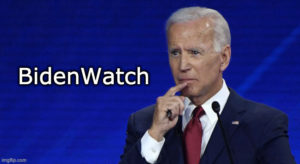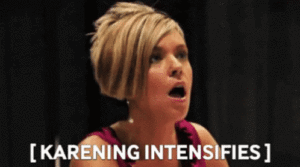Well, not all of them. No blog is big enough for all China’s lies. But here’s an update on the lies being told, and crimes being committed, by China’s ruling Communist Party.
There are plenty of direct ways the new national security law could backfire on economic freedom in Hong Kong.
For example, it criminalizes “foreign interference” without specifying who the measure targets or where the boundaries lie. Might a Goldman Sachs report out of Hong Kong questioning China’s gross domestic product data put its business charter at risk? What about Nomura Holdings downgrading a key China Inc. company?
International news organizations might feel paranoid about reporting on fraud at Hong Hong-listed companies or China corralling more than 1 million ethnic minority residents in Xinjiang province into “indoctrination camps.” It is hard to see how short sellers like Muddy Waters Research maintain Hong Kong offices when they spotlight alleged fraud at mainland companies, most recently Nasdaq-listed Luckin Coffee.
The extradition bill that helped fuel the 2019 protests, which allowed people to be moved from Hong Kong to the mainland, could return, perhaps imposed by fiat from Beijing. What multinational corporate board or startup team eying an IPO wants to have that worry in the backs of their minds? Or the specter of the Chinese Communist Party remaking Hong Kong’s judiciary and banking system in its image?
The more Xi damages China’s liberal financial zone, the more the foreign companies generating millions of jobs in Hong Kong will question why they should stay.
The Trump administration said it could no longer certify Hong Kong’s political autonomy from China, a move that could trigger sanctions and have far-reaching consequences on the former British colony’s special trading status with the U.S.
Secretary of State Michael Pompeo announced the decision Wednesday, a week after the government in Beijing declared its intention to pass a national security law curtailing the rights and freedoms of Hong Kong citizens.
“Hong Kong does not continue to warrant treatment under United States laws in the same manner as U.S. laws were applied to Hong Kong before July 1997,” Pompeo said in a statement. “No reasonable person can assert today that Hong Kong maintains a high degree of autonomy from China, given facts on the ground.”
Snip.
A finding on Hong Kong’s autonomy was compelled by last year’s Hong Kong Human Rights and Democracy Act. The law signed by Trump requires such a certification each year.
Pompeo’s decision opens the door for a range of options, from visa restrictions and asset freezes for top officials to possibly imposing tariffs on goods coming from the former colony.
“The United States stands with the people of Hong Kong as they struggle against the CCP’s increasing denial of the autonomy that they were promised,” Pompeo said, referring to the Chinese Communist Party.
As with Berlin, how the U.S., Western Europe and, more importantly, the key nations in the Indo-Pacific region react to the events in Hong Kong will end up determining the geopolitical course of this century.
That Hong Kong is no more is a fact. The form of Hong Kong, with its culture forged by the productive union of British rule of law and individual rights with Chinese entrepreneurship and diligence, may last another year or two. But the idea of Hong Kong is dead, killed by the Chinese Communist Party’s (CCP) insatiable quest for total control.
The proximate cause of Hong Kong’s demise is the CCP’s demand to use extrajudicial kidnappings, torture and executions to terrorize its 7.5 million people into submission—in short, to rule Hong Kong as it rules Turkestan (Xinjiang), Tibet and, someday soon it hopes, Taiwan.
The people of Hong Kong saw this day coming, but they were powerless to stop it. Hong Kong’s Basic Law agreement, the contract acknowledging Hong Kongese’ human rights, was always subject to termination whenever the CCP felt powerful enough to do so. It is, as with any agreement the CCP signs, worthless.
In the meantime, China’s communist leaders ramp up their paranoid rantings, claiming foreign “black hands” are behind the unrest in Hong Kong. Concurrently, China’s propaganda mouthpieces continue to press the absurd notion that America started the coronavirus pandemic.
Thus, crushing Hong Kong’s spirit while murdering a few thousand student democracy activists will only embolden Beijing. How can it be otherwise, as it perceives fewer consequences than the slap on the wrist it received after the Tiananmen Square massacre in 1989?
The problem with bombastic propagandistic lies is that they are sometimes believed. And the CCP appears predisposed to believing its own lies. To “defend” itself, the CCP may soon order its modernized armed forces into action along the first island chain, from the southern tip of Japan to the coast of Vietnam, with Taiwan and, to a lesser extent, the Philippines.
The urgent task before our generation is to prevent a monstrous darkness from snuffing out freedom’s flame. We must deter the PRC from expanding its horizon to the first island chain while setting the conditions for victory—removing the CCP, as it exists today, from power. We win, they lose.
This task has already started, when the Trump administration, for the first time since the Reagan-era effort to win the Cold War, declared that the U.S. will engage a “whole-of-government” strategic approach to the challenge presented by the PRC. This approach acknowledges that the CCP doesn’t merely present an economic threat, with its unfair trade practices and intellectual property theft, as well as a military threat—but that it also seeks to supplant our values.
Over the past month, China’s People’s Liberation Army (PLA) has reportedly moved at least 5,000 troops to the “Line of Actual Control,” which demarcates the border between China and India. The mobilization of troops to the Galwan River valley, on the westernmost border between the two countries, led to a clash on May 5, when Chinese and Indian forces engaged in fisticuffs and stone-throwing. In keeping with Sino–Indian border protocols, both sides were unarmed, but the skirmish — and another in the Naku La region near Tibet on May 12 — left several troops injured.
Though the facts on the ground in the remote Himalayan border region are unclear, satellite imagery of the area confirms a rapid military buildup by Chinese forces since April. India has responded in kind, mobilizing troops and artillery to the area in recent days, according to Bloomberg News. An Indian policy analyst who requested anonymity adds that there is also evidence that the two sides have moved aircraft closer to the region.
The apparent trigger for China’s military buildup is the completion of an Indian road in the Galwan River valley up to the Line of Actual Control, according to Indian national-security analyst Nitin Gokhale. The People’s Republic of China (PRC) has long held a superior position in this frontier region, with roads and electricity lines that far surpass those on the Indian side. However, “in the last few years, India has been playing catch-up, and has finally built roads up to the LAC,” according to Dhruva Jaishankar, the director of the Observer Research Foundation’s U.S. Initiative. India’s Border Roads Organization, which is currently constructing 61 roads, has now developed the infrastructure to compete with the PLA in the disputed territory. In turn, China has attempted to preserve its advantage by pushing back Indian development, leading to intermittent confrontations. Most recently, in 2017, China’s construction of a road through Doklam, near Bhutan, an ally of India, set off two months of brinkmanship, ending with a Chinese retreat but heightening caution on both sides.
The border dispute pertains primarily to two contested territories: the Aksai Chin plateau to the west and the Indian state of Arunachal Pradesh to the east. Chinese offensives in the two areas ignited the 1962 Sino–Indian War, ending with an informal ceasefire as the two sides agreed to the loosely demarcated Line of Actual Control. To Beijing, the LAC granted territory claimed by Delhi on the western side of the border, which contains a strategically crucial road between Tibet and Xinjiang. In the eastern portion of the LAC, however, the PRC effectively ceded what it calls “South Tibet,” retreating to the McMahon Line, the Tibetan–Indian border drawn by British colonial officials in the early 20th century. But PRC officials still consider the McMahon Line a vestige of imperialism, and continue to lay claim to Arunachal Pradesh, an Indian state of 2 million people with strong cultural ties to Tibet.
India PM Narendra Modi doesn’t strike me as the kind of person who willingly backs down…




